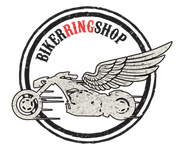Gothic is dripping with various symbols. Some of them reveal the romantic side of this culture, for example, such as roses or stained glass, while others showcase a dark and frightening nature of Gothic. One of the most widespread symbols we can see in silver Gothic jewelry is crosses. And not just the usual Catholic crosses, but a whole scattering of cross-shaped symbols that came from different cultures and eras. Let’s look closer at different types of crosses adopted in Gothic culture.
Catholic Cross
The Latin cross is the most common Christian symbol in the Western world. It signifies the cross that Christ was crucified upon; hence it has a different name – Crucifixion. Its other names are the cross of the West, the cross of Life, the cross of Suffering.
This shape, so similar to a person who spread his arms, symbolized God in Greece and China long before the advent of Christianity. A cross rising from the heart signified kindness among the ancient Egyptians.
The Long cross is another name for the Latin cross. In the Middle Ages, the priests marked a cross in the book where they needed to cross themselves.
Inverted or Upside-down Cross
This cross is the most typical for Satanists or those who call themselves such. The fact that the cross is inverted is explained as a perversion of the idea of a God's cross, a parody of God and his symbolism. A regular Latin cross, having four endings, symbolizes God the Father; the two sides are the Son and the Holy Spirit and the fourth, the lower end, means Satan. Turning the cross upside-down, people put the Devil above the Holy Trinity, thus belittling it.
In fact, the inverted cross is directly connected with one of the most revered saints, Apostle Peter. The cross of St. Peter is the second name of this cross. According to legend, during the reign of one of the most zealous persecutors of the early Christian ideas Emperor Nero, St. Peter was crucified in 65 AD upon a cross with this shape. Such an unusual way of death, or rather such a weapon of death, is said to be chosen by Peter himself as punishment for a triple betrayal of Christ.
Tau Cross
It is named after the letter τ of the Greek alphabet. The Greek "tau" originated from the Phoenician and meant "a mark, a sign". The ancient Egyptians used the T sign to symbolize both fertility and life. Combined with a circle, the symbol of eternity, it became an "ankh" - a sign of eternal life. In the Hebrew alphabet, T was the last symbol, and therefore it began to signify the end of the world. It also symbolized the salvation of the Israelites when the Angel of Death passed through Egypt to destroy the firstborns. This made T a common sign of protection.
The alternative names of tau-cross are the Egyptian cross or the cross of St. Anthony. Due to the similarities with a gallows, it is also called the "cross of the gallows". Some people believe that this was the actual shape of the cross upon which Christ was crucified.
Celtic Cross
It is a symbol of clairvoyance and assistance in its development. The Celtic cross is sometimes called the cross of Jonah or the Large cross. The circle symbolizes both the sun and eternity. This cross, which appeared in Ireland before the 8th century, probably originates from the Chi Rho, the monogram of the first two letters of Christ written in Greek. This fact became the prerequisite for the spread of the cross as a symbol of Christ. This cross is often decorated with carvings, animals and biblical scenes, such as the fall of man or the sacrifice of Isaac.

